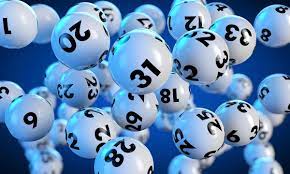Have you ever wondered how ordinary household materials can create extraordinary reactions? The Blue Salt Trick is a fascinating and safe experiment that captivates both kids and adults. Often used in classrooms, science demonstrations, and at-home baking soda trick for men, this simple activity teaches basic principles of chemistry while producing striking visual effects.
What Is the Blue Salt Trick?
The Blue Salt Trick involves a chemical reaction that turns ordinary salt or crystals into a vivid blue color. Typically, it demonstrates the interaction between salts and specific indicators or chemicals, producing a dramatic and visually engaging change. Though the process looks like magic, it’s rooted in real chemical principles such as hydration, oxidation, or pH changes.
This experiment is widely praised for being safe, inexpensive, and easy to perform with materials commonly found at home or in a classroom lab.
How the Blue Salt Trick Works
The exact method may vary depending on the version of the trick, but the general principle relies on creating a visible color change using a reaction between a chemical and a salt compound. Here’s a simplified explanation:
- Start with a clear crystal or salt, such as table salt or Epsom salt.
- Add a special chemical solution (like copper sulfate, cobalt chloride, or an indicator solution).
- The salt absorbs or reacts with the chemical, changing its structure or ion composition.
- This reaction produces a vivid blue color, creating the “wow” effect.
In some versions, heat, water, or even a small amount of vinegar may be used to accelerate the reaction.
Applications and Educational Benefits
The Blue Salt Trick isn’t just entertaining — it’s a great educational tool:
- Teaching Chemistry Basics: Introduces concepts like solubility, ion exchange, and hydration.
- Visual Learning: Helps students see chemical reactions in a tangible, colorful way.
- Hands-On Engagement: Encourages experimentation, observation, and curiosity.
- Safe Science Demonstration: Uses non-toxic materials, making it ideal for classrooms and home experiments.
Teachers often use this trick to spark interest in chemistry before moving on to more complex topics, making learning interactive and fun.
Safety Precautions
While the Blue Salt Trick is generally safe, it’s important to follow these precautions:
- Always wear gloves and safety goggles to protect against irritation from chemicals.
- Use the experiment under adult supervision, especially with children.
- Avoid ingesting any chemicals used in the reaction.
- Dispose of materials properly after the experiment.
By following these guidelines, you can enjoy the experiment safely while minimizing any risks.
Variations of the Blue Salt Trick
The trick can be adapted for different age groups and settings:
- Classroom Version: Uses copper sulfate crystals to show the formation of hydrated blue crystals.
- Magic Trick Version: Involves color-changing salts that appear to “magically” turn blue when water is sprinkled.
- Home Experiment: Uses food coloring and common salts to mimic the visual effect safely.
These variations make it versatile, whether you want a science lesson, a party trick, or an at-home experiment for curious minds.
Conclusion
The Blue Salt Trick is a perfect blend of science and spectacle. It turns a simple chemical reaction into a captivating visual display that educates and entertains. By demonstrating the surprising transformations that occur in chemistry, this experiment sparks curiosity, encourages learning, and makes science accessible to everyone.
Whether you’re a teacher, parent, or just a science enthusiast, the Blue Salt Trick is a fun, safe, and memorable way to explore the wonders of chemistry.
